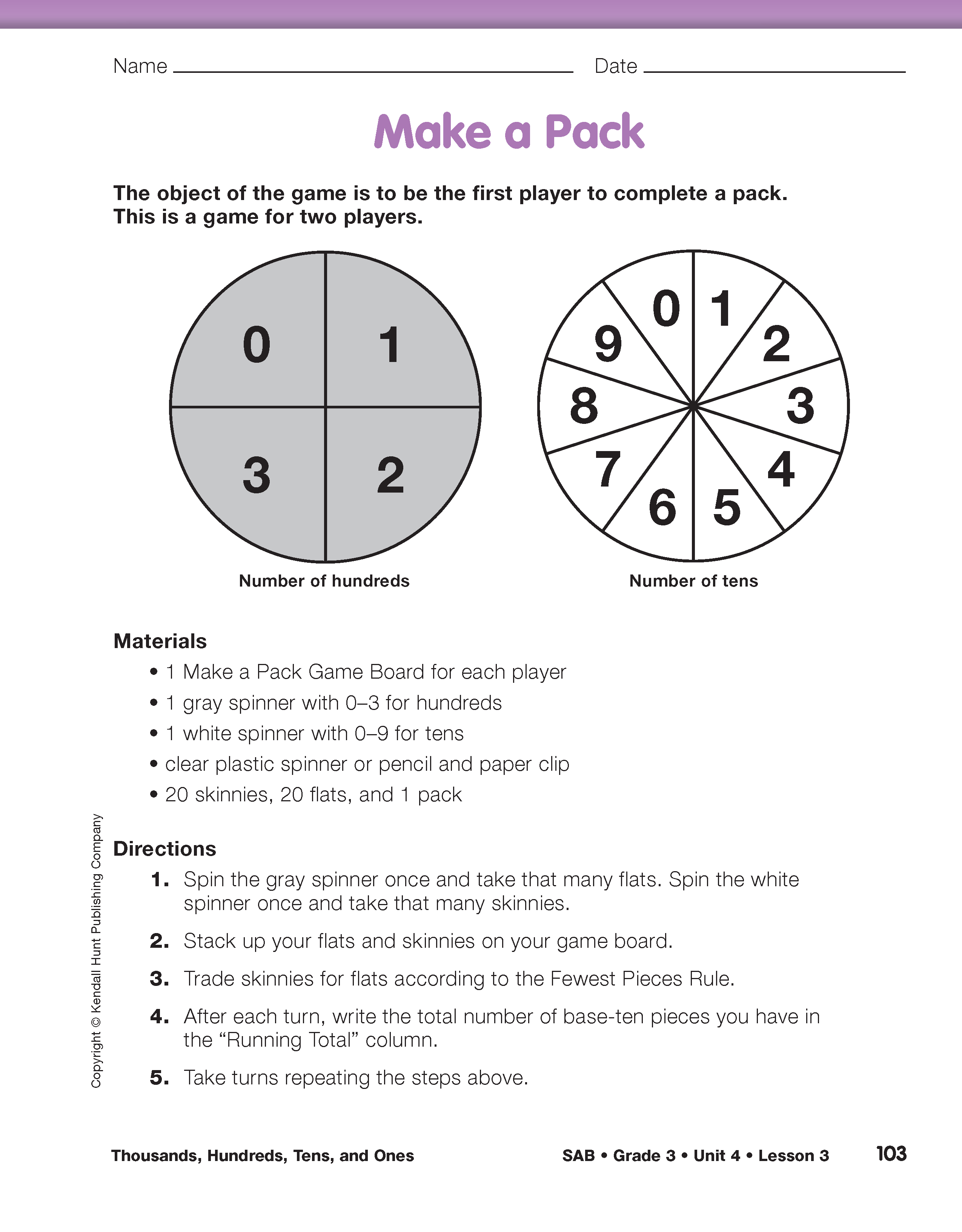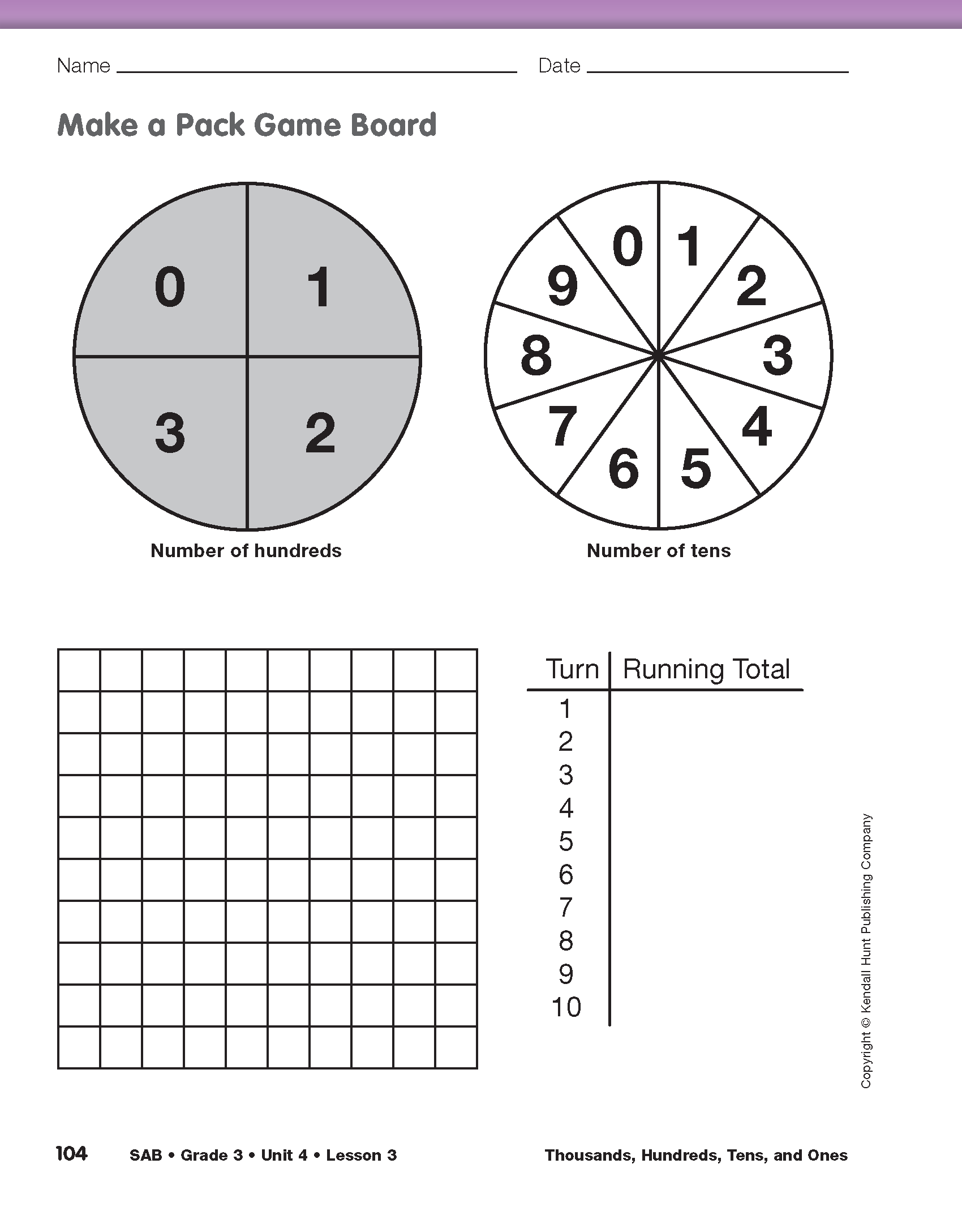Thousands, Hundreds, Tens, and Ones
Est. Class Sessions: 1–2Developing the Lesson
Part 1. Introduce Packs
Understand the Base-Ten Relationship. Students work with a full set of base-ten pieces to extend their understanding of the relationships between the pieces: 10 pieces of one size have the same value as one piece of the next larger size.
Students have begun to realize that the reason we look for the fewest pieces in a partition of a number is that this representation matches the digits in the number. When represented this way, the number of bits (ones) is the first digit from the right. The number of skinnies (tens) is the second digit from the right and so on.
Building Packs. Distribute packs (10 cm × 10 cm × 10 cm blocks), flats, skinnies, and bits. Ask student pairs to examine the pieces and answer Questions 1–3 in the Student Guide. These questions reinforce the relationship between pieces: one pack has the same value as 10 flats, 100 skinnies, or 1000 bits.
Play Make a Pack. Have students follow the directions on the Make a Pack pages in the Student Activity Book as you demonstrate playing the game with a student using a display of the Make a Pack Game Board. This is similar to the Make a Flat game in Lesson 2, but it uses skinnies and flats to build packs. Students stack pieces on top of each other until a pack is completed.
As you demonstrate the game, ask:
Have student pairs play the game.















